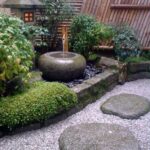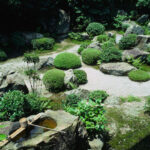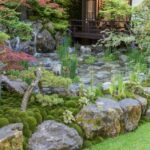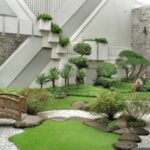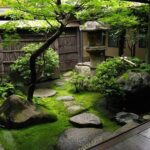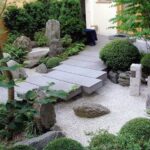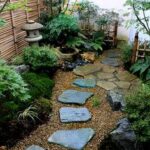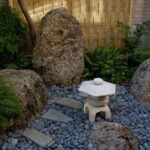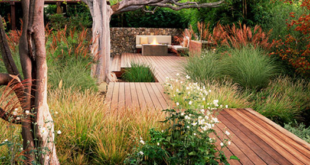Japanese garden design is a unique and ancient art form that has been perfected over centuries. These gardens are designed to create a sense of tranquility and harmony, and are meant to be a place of peaceful contemplation and relaxation. The art of Japanese garden design incorporates elements such as rocks, water, and plants to create a serene and harmonious environment.
One of the key principles of Japanese garden design is the concept of “wabi-sabi,” which is the idea of finding beauty in imperfection and impermanence. This principle is reflected in the use of natural materials and the use of irregular shapes and asymmetrical design elements in Japanese gardens.
Another important aspect of Japanese garden design is the use of symbolism. In Japanese culture, certain plants and elements are believed to have specific meanings and qualities. For example, bamboo symbolizes strength and resilience, while cherry blossoms represent the fleeting nature of life.
One of the most iconic elements of Japanese garden design is the use of Zen rock gardens, also known as “karesansui” gardens. These gardens typically consist of carefully arranged rocks and gravel, meant to evoke the feeling of a dry riverbed or a sea of waves. Zen rock gardens are designed to encourage meditation and contemplation, and are often found in traditional Zen temples.
In addition to rocks and gravel, water is another important element in Japanese garden design. Water features such as ponds, waterfalls, and streams are used to create a sense of serenity and tranquility in the garden. Water is also believed to have a purifying and healing quality in Japanese culture.
Plants are also an integral part of Japanese garden design. Traditional Japanese gardens typically feature a variety of plants, including moss, ferns, bamboo, and cherry trees. These plants are carefully chosen for their texture, color, and seasonal interest, and are arranged in a way that reflects the natural landscape.
To create your own Japanese garden, start by considering the layout and design of your outdoor space. Think about how you can incorporate elements such as rocks, water, and plants to create a sense of harmony and tranquility. Consider the use of symbolism and incorporate plants and materials that have special meaning to you.
When designing your Japanese garden, remember to embrace the principles of wabi-sabi and strive for simplicity and natural beauty. Pay attention to the placement of rocks, water features, and plants, and create a sense of balance and symmetry in your design.
Whether you have a small backyard or a larger outdoor space, incorporating elements of Japanese garden design can bring a sense of peace and tranquility to your outdoor environment. By embracing the art of Japanese garden design, you can create a beautiful and harmonious space that invites contemplation and relaxation.

